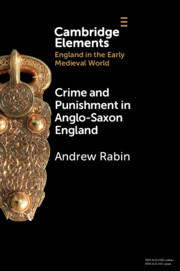Element contents
Crime and Punishment in Anglo-Saxon England
Published online by Cambridge University Press: 21 August 2020
Summary
- Type
- Element
- Information
- Online ISBN: 9781108943109Publisher: Cambridge University PressPrint publication: 24 September 2020
Bibliography
Primary Sources
Secondary Sources
- 7
- Cited by

